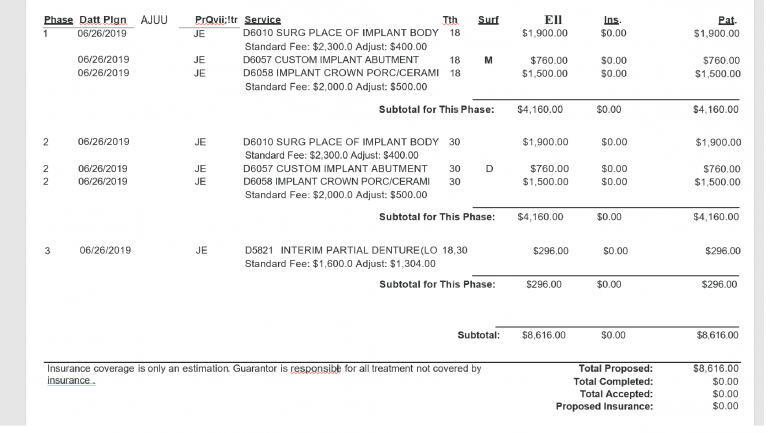
Dental Code D4920: Unscheduled dressing change (by someone other than treating dentist or their staff)
Dental Code D4920 refers to an unscheduled dressing change performed by someone other than the treating dentist or their staff. This code is used to bill for the service of replacing a dressing or bandage in the oral cavity by a non-treating dental professional.
Assessment and Evaluation
The first step in an unscheduled dressing change is the assessment and evaluation of the patient's oral condition. This is usually performed by the treating dentist or their staff during a prior appointment. The purpose of this evaluation is to determine the need for a dressing change and identify any potential complications or risks associated with the procedure. The dentist will examine the affected area, review the patient's medical history, and assess the healing progress.
During the assessment, the dentist will evaluate the wound or surgical site, looking for signs of infection, excessive bleeding, or poor healing. They will also consider the patient's overall health and any underlying medical conditions that may affect the healing process. This comprehensive evaluation helps determine if an unscheduled dressing change is necessary and ensures that the patient receives appropriate care.
Preparation
Before the dressing change procedure, the dental professional will gather all the necessary materials and equipment. This may include sterile dressings, gloves, masks, and other protective gear. Ensuring a sterile environment is essential to prevent the introduction of bacteria or other contaminants into the wound.
The area around the patient's mouth will be prepared by cleaning and disinfecting it to minimize the risk of infection. The dental professional will use an antiseptic solution, such as chlorhexidine, to thoroughly cleanse the area. They will also cover the patient with a sterile drape to maintain a clean and controlled environment.
Removal of Previous Dressing
Once the preparation is complete, the non-treating dental professional will carefully remove the previous dressing. This is done with utmost care to avoid causing any discomfort or damage to the healing tissues. The dressing is typically loosened by gently moistening it with saline or an appropriate solution. Moistening the dressing helps prevent it from adhering to the wound or any sutures.
Using sterile forceps or gloved hands, the dental professional will gently peel off the dressing, ensuring that it does not adhere to any healing tissue or sutures. They will proceed slowly and cautiously, taking care not to disrupt the wound or cause unnecessary pain to the patient. If the dressing proves difficult to remove, additional moistening may be necessary to facilitate its removal without causing any harm.
Wound Cleaning and Disinfection
After the previous dressing is removed, the oral wound or surgical site needs to be cleaned and disinfected. This is crucial to prevent infection and promote proper healing. The dental professional will use a sterile solution, such as saline or an antiseptic solution, to gently cleanse the area.
Using a sterile cotton swab or gauze, the dental professional will carefully clean the wound, removing any debris or excess exudate. They will do this by gently dabbing the wound with the swab or gauze, being cautious not to apply excessive pressure that could disrupt the healing tissues. The cleaning process may need to be repeated several times until the wound is thoroughly cleansed.
Application of New Dressing
Once the wound is clean and dry, a new dressing will be applied. The type of dressing used will depend on the specific needs of the patient and the nature of the wound. Commonly used dressings include non-adherent sterile dressings, gauze pads, or medicated dressings. The dental professional will carefully place the dressing over the wound, ensuring that it covers the entire area and provides adequate protection.
If the wound requires additional support or compression, the dental professional may apply additional layers of dressings or use specialized dressings designed for these purposes. It is important to select a dressing that is appropriate for the size and shape of the wound, as well as its location in the oral cavity.
Securing the Dressing
To ensure that the dressing stays in place and does not become dislodged, it needs to be securely fastened. This is typically done using medical adhesive tape or other appropriate methods. The dental professional will apply the tape or other securing device around the dressing, ensuring that it is snug but not too tight.
It is important to maintain proper circulation and avoid restricting blood flow to the area. The dental professional will also ensure that the tape or securing device does not come into direct contact with the wound, as this could cause irritation or discomfort to the patient. They will carefully inspect the dressing to ensure it is properly secured and comfortable for the patient.
Summary of Dental Code D4920
Dental Code D4920 involves an unscheduled dressing change performed by a non-treating dental professional. The procedure includes assessing and evaluating the patient's oral condition, preparing the area, removing the previous dressing, cleaning and disinfecting the wound, applying a new dressing, and securing it in place. Each step is crucial to ensure proper healing and minimize the risk of infection.
Discover affordable smiles with Dr. BestPrice! Compare prices, make informed decisions, and enjoy top-quality care without the premium price tag.
